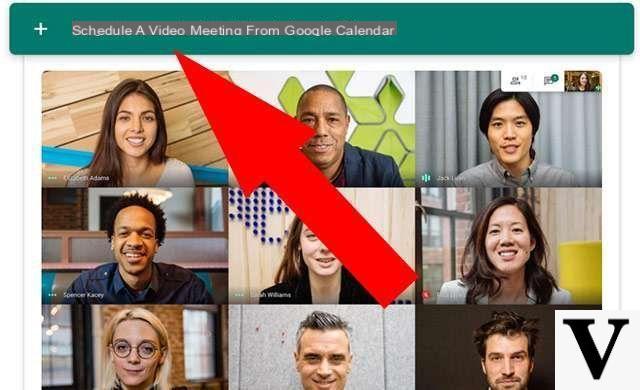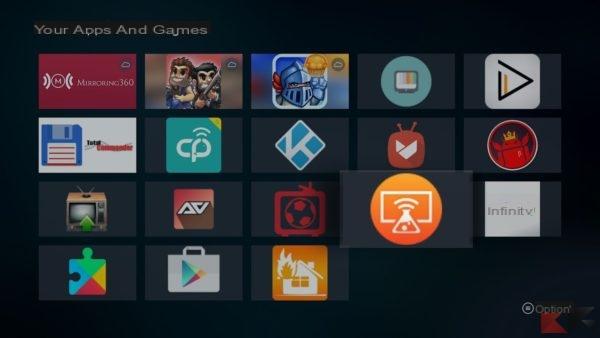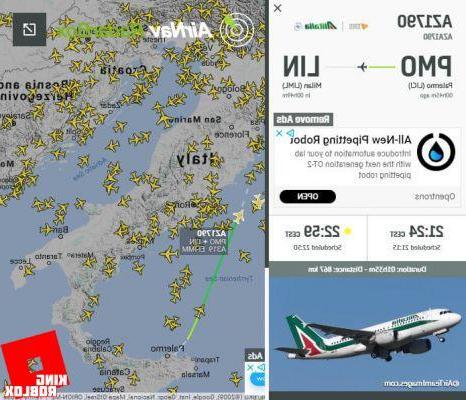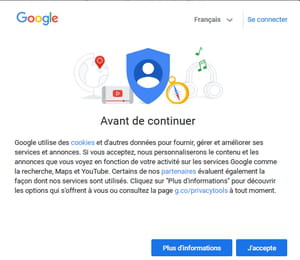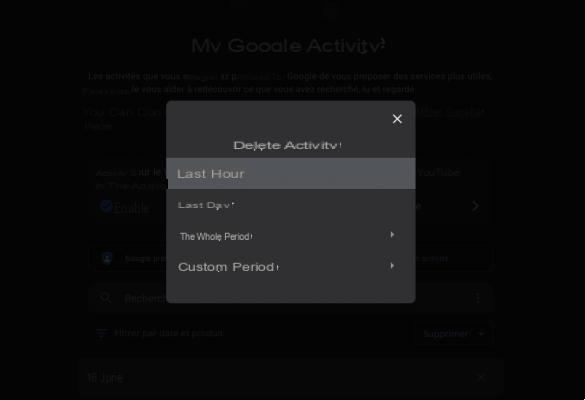According to Google, the video game console is no longer needed: Stadia, the new platform of cloud gaming, in fact, intends to put Xbox and PlayStation (but also traditional PC gaming) offside to create something new and different, cloud-based and accessible everywhere. Not that the idea is an absolute novelty, but until now no one has had the strength to take an announcement of this type to the extreme: now that the bigG is on the pitch, things could really change.
The project was launched by Google with the support of names such as AMD, Unreal Engine, Unity and Havok. Ubisoft appears to be among the very first partners, so immediately on the launch track with the titles that Stadia also offers in Italy starting from November 19, 2019. There are different access methods, as well as many types of supported devices.
What is Stadia
Stadia is the gaming platform developed by Google that allows you to access streaming video games and without using any console. The principle is that of cloud gaming, which is a gaming platform based on cloud rather than local resources. This means that the data is not processed by the computing power of a console located close to the player (as in the case of PC games or traditional Xbox / PlayStation), but by dedicated remote servers. More simply, Stadia is to video games like Netflix to movies or Spotify to music, but with some differences in the way of using the contents: access is remote, the model is innovative.
In a infrastructure like that of Stadia, the management of the entire entertainment experience is therefore entrusted to the server farm and to the efficiency of the communication channels between the server and the client used by the user. The gaming experience is of quality when there is no lag, the flow of the game is fluid and the user can enjoy his experience without ever having to think about the fact that he is talking live with a remote server.
In all respects it is about a form of streaming-based gaming: the game information is received by the user within a continuous stream of images, while the user in turn interacts by sending their game decisions to the server. In the promises of Google, the user of the Stadia platform will not in any way notice that he is working on a cloud platform and this efficiency will bring the gaming experience to a new dimension: more transversal, less onerous and based on a logic. from "gaming as a service".
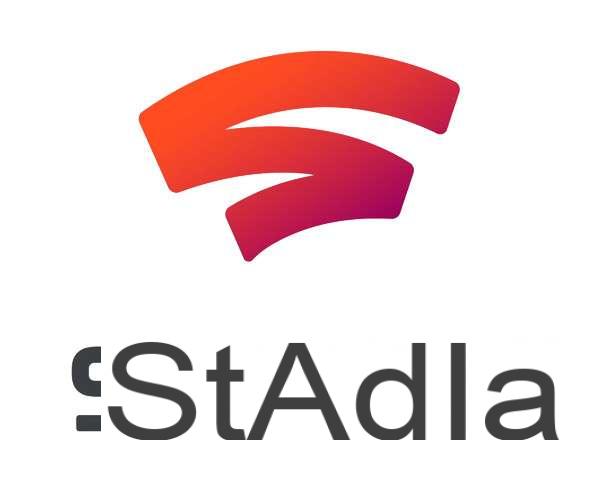
Will Google make it where others have failed and many have not yet ventured? Are gaming consoles already the past? Google believes it is the right time for Stadia and for cloud gaming: the investment is important, the bet is high-sounding and the opportunities are abnormal.
Stadia's cloud-based infrastructure evolves to meet the needs of YouTube gamers, developers and creators.
Play where you want, when you want
It's a short step from the always-on to the always-on-game. Cloud gaming, in fact, allows you to access your games almost anywhere since it is enough to have a smartphone in your pocket, a sufficient connection speed (at least 10 Mbps) and a sufficient number of GB to be able to play at any time. It should be noted that at least initially the streaming of the titles is not allowed on the mobile network.
The cloud platform therefore detaches users from the fixed location, but at the same time not a little raises the promises carried forward so far by the other players who have already been active in cloud gaming for some time. No downloads required, no installs, no patches: with a click you are in the game, with a click you are out, and you don't need to think about anything else.
Not only that: thanks to the Crowd Play function, with a simple click you can access a game in multiplayer, thus being able to have a room always full of opportunities from which to choose your favorite match.
4K definition, 60 fps
Google's promise is that of a smooth and enjoyable gaming experience, offering the user images with definition up to 4K and with frequency equal to 60 fps. In short, on smartphones as on TV, you will not have to experience slowdowns and, on the contrary, the user must be able to enjoy the images of HDR quality and l 'surround sound provided for users with a paid profile.
How much
Google announced two types of subscription for access to the gaming experience offered by Stadia, with different prices and features:
- Stadia Pro: € 9,99 per month
It allows up to 4K resolution, a frame rate of 60 fps and 5.1 surround sound, to which are added exclusive discounts on a selection of games and the possibility of free access to a whole range of titles. - Stadia Base: Free
Allows a resolution up to a (still excellent) Full HD, frame rate equal to 60 fps, stereo audio; there are no games accessible free of charge and it is not possible to access exclusive discounts reserved for Pro subscribers. This formula will be available from 2020.

Immediately after the presentation, a package called Founder's Edition was made available for pre-order at 129,00 euros, reserved for the very first ones who wanted to get on board, soon sold-out.
In reasoning this type of prices, however, it is necessary to immediately metabolize the idea of what a different gaming system is, which also determines a new business model. The user pays a subscription fee if he does not want to compromise in terms of quality (4K, 60 fps, surround sound), then he still has to put his hand to his wallet for buy games individually, unless these are offered on a promotional basis with the subscription. The monthly expense, therefore, is used to guarantee access to the cloud infrastructure.
The titles will not be purchased on any physical media since no material availability (on DVD or Blu-ray) or intangible (allocated on a local disk) is required: cloud gaming rather suggests a "gaming as a service" mode in which various forms of subscription (to the platform or to premium games) replace the traditional purchase.
The support changes, the supply chain changes, the market logic changes, change the whole model: Just as streaming has changed the way people pay for access to movies and music, so too will video games.
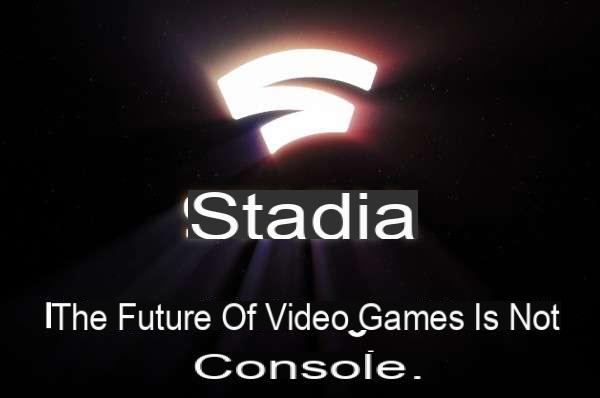
Stadia in Italy
Il launching by Stadia in Italy and in 13 other countries around the world the November 19 2019. The price of the subscription with the Pro formula offered in our country is the one already mentioned: 9,99 euros per month.
The games
There are 22 games offered on day one of Stadia (further on the list), with the prospect of seeing the catalog expand soon with the inclusion of other productions, so as to be able to offer a varied experience able to satisfy every palate.
In Google's vision for Stadia, none software house he will no longer have to worry about developing a desktop version, one for console and one for mobile: the platform was created for this and asks large groups to make the titles simply for the cloud. The example will be the Stadia Game and Entertainment studio led by Jade Raymond, former Electronic Arts and Ubisoft.
A confirmation arrived from the initial presentation is that relating to the exclusives. The games that Stadia will be able to have only for itself will constitute a very high competitive value, like what Netflix did to establish itself in the world of streaming video. So it will be for the Google project: video games in exclusive right that characterize the experience on the platform compared to competitors (Microsoft xCloud above all), raising the overall level and trying to dig a gap between Mountain View and the competition.
The debut games
This is the stock of titles that Google promises to users for the debut in Italy, from day one.
- Assassin’s Creed Odyssey;
- Attack on Titan: Final Battle 2;
- Destiny 2: The Collection;
- Farming Simulator 2019;
- Final Fantasy XV;
- Football Manager 2020;
- Grid 2019;
- Wild;
- Just Dance 2020;
- China;
- Metro Exodus;
- Mortal Kombat 11;
- NBA 2K20;
- Rage 2;
- Rise of the Tomb Raider;
- Red Dead Redemption 2;
- Samurai Shodown;
- Shadow of the Tomb Raider;
- Thumper;
- Tomb Raider 2013;
- Trials Rising;
- Wolfenstein: Youngblood.
Hardware
The Google Stadia platform allows you to play anywhere and with almost any hardware. Below is the list of compatible devices debut.
- any Windows, macOS, or Linux computer capable of running the version of the Chrome browser;
- any computer or tablet running Chrome OS;
- it dongles Google Chromecast Ultra;
- the official Stadia controller;
- gli smartphone Pixel 2, Pixel 2 XL, Pixel 3, Pixel 3 XL, Pixel 3a, Pixel 3a XL, Pixel 4, Pixel 4 XL;
- any iOS device with version 11 or later of the operating system (for account management only);
- any Android device with OS version 6 or later (for account management only).
Nothing else is needed because GPU, CPU and memory are in effect elements delegated to Google: the information is not processed locally, but managed by the remote server which sends the client only the final result necessary for the game.
The absence of restrictive requirements therefore indicates the possibility of access Google Stadia from both smartphones and PCs, as well as from tablets or Chromecast, all with a privileged relationship between the gaming platform and the YouTube video platform.
The controller
To make the experience on Stadia as good as it gets, however, Google has also developed a dedicated one controller designed to offer gamers a faster and more exciting management of their video games. Through the network WiFi, the Stadia controller generates a direct connection with the servers, thus allowing a direct, quick and unmediated dialogue that is in some ways like the traditional one between the controller and the console. The difference is that in this case the distance is not a few meters, but several hundreds of kilometers.

The controller, available in white, black and blue colors, allows you to have all the traditional functions of video games, but at the same time allows you to perform snapshots of images for later sharing, or for access the Google Assistant by means of a special built-in microphone.
The Stadia data center
The computing power and memory that Stadia will need to support are all concentrated in the data center managed by Google. As the client is eliminated, limiting all functionality to one monitor and one input sensor, all the burden falls on the infrastructure. To this end, the Mountain View group has prepared a very thick equipment, with specifications destined to grow further with the increase in users:
- CPU x86 custom da 2,70 GHz hyper-threaded con AVX2 SIMD e 9,5 MB di cache L2+L3;
- GPU AMD custom con memoria HBM2 e 56 compute unit;
- 16 GB of RAM with performance up to 484 GB / s;
- cloud storage SSD.
Band and connection
How much bandwidth is needed to be able to access entertainment with Google Stadia? Google explained right away:
A high-speed Internet connection is required. Viewing in 4K HDR at 60 fps is bandwidth dependent. The game experience may vary depending on the quality of the Internet connection.
The amount of bandwidth required to stream games on Stadia must therefore be of a certain level, as the promised images are capable of reaching 4K with frame rates of 60 frames per second. The quality, as well as the absence of lag, is guaranteed by the safe adoption of adaptive algorithms capable of scaling the definition as the performance of the connection decreases. Just as it is complex to be able to enjoy a high definition movie when the bandwidth flow is not particularly efficient, even more the experience will be complex in gaming, where instantaneity is everything and where the buffer is often out of range. of the game.
Hence the precise specifications indicated by Google during the presentation: you need at least 10 Mbps in download and 1 Mbps in upload for a minimal gaming experience, with performance increasing based on the download bandwidth capacity. For a valid 1080p experience (as guaranteed for free accounts) 20 Mbps are required, while for a true 4K experience typical of a Stadia Pro account, 35 Mbps is required.

Google has also developed a simple speed test that allows you to understand if your current connection is able to support the desired gaming experience.
Il bandwidth consumption it will be particularly important when access to the game will take place from a mobile station (possibility denied at launch), where the limit of GB available to your smartphone could impose specific limits on entertainment on Stadia. The same general picture of consumer mobile offers are therefore destined to change, with a nod to those who want to enjoy a cloud gaming experience on the move looking for support in the speed and capacity of special subscriptions.
Stadia e YouTube
Stadia will by definition have a privileged relationship with UAF YouTube. This happens for various reasons and the first is that of a sort of common vocation: YouTube, which has always been synonymous with video streaming, will host images and game trailers, becoming in many ways also a showcase for the videogame experience of others. Furthermore, the repository will become a Trojan horse for games, as it will be enough to click to switch from viewing a game to direct access to the game itself.
YouTube is therefore a candidate from day one to become a sort of compendium to Google Stadia, and vice versa the promise of synergies is certainly not hidden. Stadia and YouTube are therefore destined to become the two sides of the same coin of cloud gaming: on the one hand there is the direct gaming experience, on the other there is the indirect one of the gameplay images. The union between the two parties gives Google a privileged position to make Stadia a must for anyone who loves video games.
*
*
Your email will be used to let you know if someone replies to your comment and it will not be published. You declare that you have read and accept the provisions of the privacy policy.By posting this comment you consent to a cookie saving your data (name, email, website) for the next comment. Subscribe me to the free Punto Informatico newsletter Every morning directly in your email box all the news from the digital and tech world I have read and agree to the privacy policy I consent to the use of my data by third parties for direct marketing purposes with modality automated or traditional
Confirm and publish
Thank you, your comment is being approved Thank you, your comment has been published Comment not sent Thank you for subscribing to our newsletter Oops, the subscription to the newsletter was not successful. Try again. Read the other comments
 Cloud
Cloud
Google takes a step back on Stadia
 Cloud
Cloud
Attention Stadia, xCloud arrives: 15 new games
 Cloud
Cloud
120 new games for Google Stadia in 2020
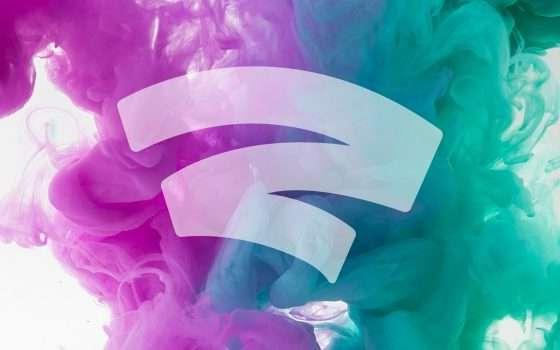 Cloud
Cloud
Stadia's cloud gaming on an eBook reader?
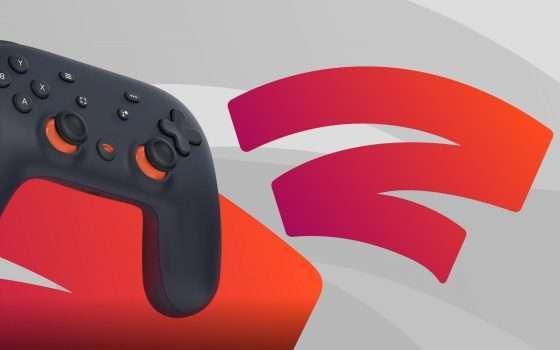 Cloud
Cloud
Stadia and new controllers: a matter of triggers
 Cloud
Cloud
Stadia: Tomb Raider and Thumper free in January
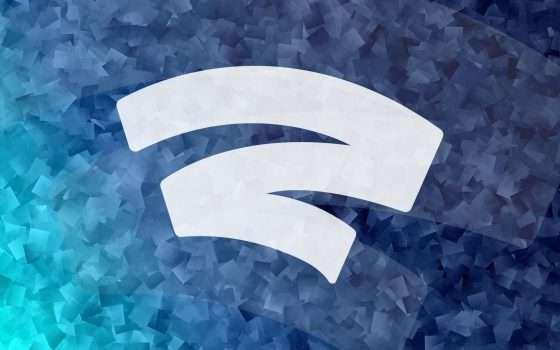 Cloud
Cloud
Cloud gaming: now Stadia has its goals
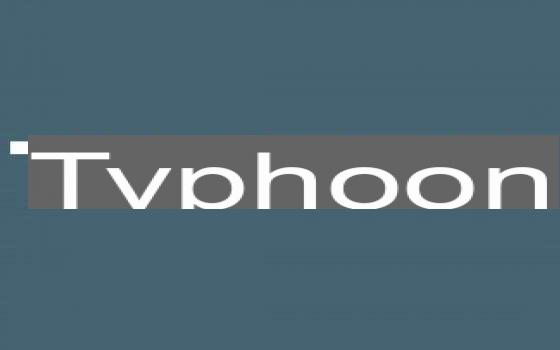 Cloud
Cloud
Typhoon is Google's acquisition of Stadia
 Cloud
Cloud
Stadia on all Chromecast Ultra with an update
 Cloud
Cloud
Three new games and Stream Connect for Stadia
 Cloud
Cloud
Google gives a Buddy Pass to Stadia Founders
 Cloud
Cloud
Google Stadia: the best is yet to come
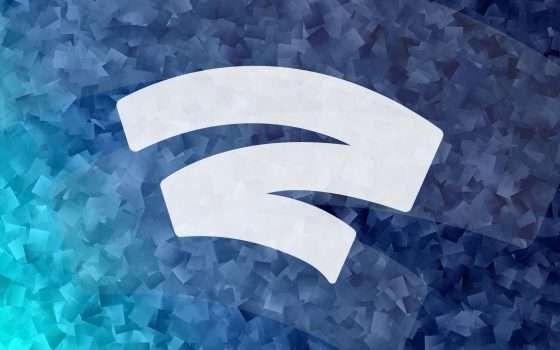 Cloud
Cloud
Stadia games are now also bought from Chrome
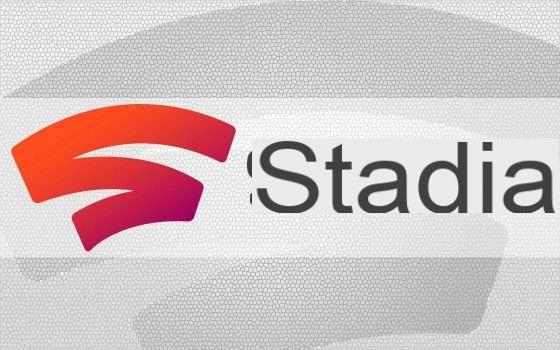 Cloud
Cloud
Stadia, the Google Assistant is coming
Stadia and Chromecast Ultra: the situation is hot
 Cloud
Cloud
Amazon in cloud gaming, against Stadia and xCloud?
Stadia: here is the official Claw accessory from Google
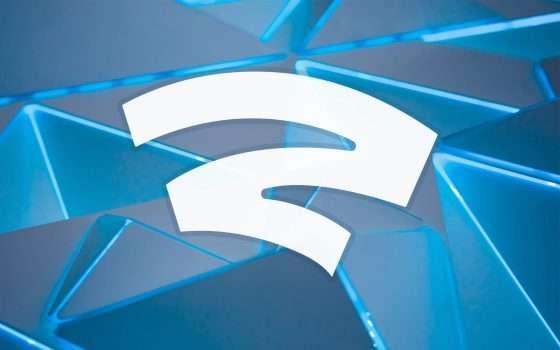 Cloud
Cloud
Stadia: ok the launch and the games, but the codes?
- 1
- 2
- 3
- 4
- 5
- 6
According to Google, the video game console is no longer needed: Stadia, the new platform of cloud gaming, in fact, intends to put Xbox and PlayStation (but also traditional PC gaming) offside to create something new and different, cloud-based and accessible everywhere. Not that the idea is an absolute novelty, but until now no one has had the strength to take an announcement of this type to the extreme: now that the bigG is on the pitch, things could really change.
The project was launched by Google with the support of names such as AMD, Unreal Engine, Unity and Havok. Ubisoft appears to be among the very first partners, so immediately on the launch track with the titles that Stadia also offers in Italy starting from November 19, 2019. There are different access methods, as well as many types of supported devices.
What is Stadia
Stadia is the gaming platform developed by Google that allows you to access streaming video games and without using any console. The principle is that of cloud gaming, which is a gaming platform based on cloud rather than local resources. This means that the data is not processed by the computing power of a console located close to the player (as in the case of PC games or traditional Xbox / PlayStation), but by dedicated remote servers. More simply, Stadia is to video games like Netflix to movies or Spotify to music, but with some differences in the way of using the contents: access is remote, the model is innovative.
In a infrastructure like that of Stadia, the management of the entire entertainment experience is therefore entrusted to the server farm and to the efficiency of the communication channels between the server and the client used by the user. The gaming experience is of quality when there is no lag, the flow of the game is fluid and the user can enjoy his experience without ever having to think about the fact that he is talking live with a remote server.
In all respects it is about a form of streaming-based gaming: the game information is received by the user within a continuous stream of images, while the user in turn interacts by sending their game decisions to the server. In the promises of Google, the user of the Stadia platform will not in any way notice that he is working on a cloud platform and this efficiency will bring the gaming experience to a new dimension: more transversal, less onerous and based on a logic. from "gaming as a service".

Will Google make it where others have failed and many have not yet ventured? Are gaming consoles already the past? Google believes it is the right time for Stadia and for cloud gaming: the investment is important, the bet is high-sounding and the opportunities are abnormal.
Stadia's cloud-based infrastructure evolves to meet the needs of YouTube gamers, developers and creators.
Play where you want, when you want
It's a short step from the always-on to the always-on-game. Cloud gaming, in fact, allows you to access your games almost anywhere since it is enough to have a smartphone in your pocket, a sufficient connection speed (at least 10 Mbps) and a sufficient number of GB to be able to play at any time. It should be noted that at least initially the streaming of the titles is not allowed on the mobile network.
The cloud platform therefore detaches users from the fixed location, but at the same time not a little raises the promises carried forward so far by the other players who have already been active in cloud gaming for some time. No downloads required, no installs, no patches: with a click you are in the game, with a click you are out, and you don't need to think about anything else.
Not only that: thanks to the Crowd Play function, with a simple click you can access a game in multiplayer, thus being able to have a room always full of opportunities from which to choose your favorite match.
4K definition, 60 fps
Google's promise is that of a smooth and enjoyable gaming experience, offering the user images with definition up to 4K and with frequency equal to 60 fps. In short, on smartphones as on TV, you will not have to experience slowdowns and, on the contrary, the user must be able to enjoy the images of HDR quality and l 'surround sound provided for users with a paid profile.
How much
Google announced two types of subscription for access to the gaming experience offered by Stadia, with different prices and features:
- Stadia Pro: € 9,99 per month
It allows up to 4K resolution, a frame rate of 60 fps and 5.1 surround sound, to which are added exclusive discounts on a selection of games and the possibility of free access to a whole range of titles. - Stadia Base: Free
Allows a resolution up to a (still excellent) Full HD, frame rate equal to 60 fps, stereo audio; there are no games accessible free of charge and it is not possible to access exclusive discounts reserved for Pro subscribers. This formula will be available from 2020.

Immediately after the presentation, a package called Founder's Edition was made available for pre-order at 129,00 euros, reserved for the very first ones who wanted to get on board, soon sold-out.
In reasoning this type of prices, however, it is necessary to immediately metabolize the idea of what a different gaming system is, which also determines a new business model. The user pays a subscription fee if he does not want to compromise in terms of quality (4K, 60 fps, surround sound), then he still has to put his hand to his wallet for buy games individually, unless these are offered on a promotional basis with the subscription. The monthly expense, therefore, is used to guarantee access to the cloud infrastructure.
The titles will not be purchased on any physical media since no material availability (on DVD or Blu-ray) or intangible (allocated on a local disk) is required: cloud gaming rather suggests a "gaming as a service" mode in which various forms of subscription (to the platform or to premium games) replace the traditional purchase.
The support changes, the supply chain changes, the market logic changes, change the whole model: Just as streaming has changed the way people pay for access to movies and music, so too will video games.

Stadia in Italy
Il launching by Stadia in Italy and in 13 other countries around the world the November 19 2019. The price of the subscription with the Pro formula offered in our country is the one already mentioned: 9,99 euros per month.
The games
There are 22 games offered on day one of Stadia (further on the list), with the prospect of seeing the catalog expand soon with the inclusion of other productions, so as to be able to offer a varied experience able to satisfy every palate.
In Google's vision for Stadia, none software house he will no longer have to worry about developing a desktop version, one for console and one for mobile: the platform was created for this and asks large groups to make the titles simply for the cloud. The example will be the Stadia Game and Entertainment studio led by Jade Raymond, former Electronic Arts and Ubisoft.
A confirmation arrived from the initial presentation is that relating to the exclusives. The games that Stadia will be able to have only for itself will constitute a very high competitive value, like what Netflix did to establish itself in the world of streaming video. So it will be for the Google project: video games in exclusive right that characterize the experience on the platform compared to competitors (Microsoft xCloud above all), raising the overall level and trying to dig a gap between Mountain View and the competition.
The debut games
This is the stock of titles that Google promises to users for the debut in Italy, from day one.
- Assassin’s Creed Odyssey;
- Attack on Titan: Final Battle 2;
- Destiny 2: The Collection;
- Farming Simulator 2019;
- Final Fantasy XV;
- Football Manager 2020;
- Grid 2019;
- Wild;
- Just Dance 2020;
- China;
- Metro Exodus;
- Mortal Kombat 11;
- NBA 2K20;
- Rage 2;
- Rise of the Tomb Raider;
- Red Dead Redemption 2;
- Samurai Shodown;
- Shadow of the Tomb Raider;
- Thumper;
- Tomb Raider 2013;
- Trials Rising;
- Wolfenstein: Youngblood.
Hardware
The Google Stadia platform allows you to play anywhere and with almost any hardware. Below is the list of compatible devices debut.
- any Windows, macOS, or Linux computer capable of running the version of the Chrome browser;
- any computer or tablet running Chrome OS;
- it dongles Google Chromecast Ultra;
- the official Stadia controller;
- gli smartphone Pixel 2, Pixel 2 XL, Pixel 3, Pixel 3 XL, Pixel 3a, Pixel 3a XL, Pixel 4, Pixel 4 XL;
- any iOS device with version 11 or later of the operating system (for account management only);
- any Android device with OS version 6 or later (for account management only).
Nothing else is needed because GPU, CPU and memory are in effect elements delegated to Google: the information is not processed locally, but managed by the remote server which sends the client only the final result necessary for the game.
The absence of restrictive requirements therefore indicates the possibility of access Google Stadia from both smartphones and PCs, as well as from tablets or Chromecast, all with a privileged relationship between the gaming platform and the YouTube video platform.
The controller
To make the experience on Stadia as good as it gets, however, Google has also developed a dedicated one controller designed to offer gamers a faster and more exciting management of their video games. Through the network WiFi, the Stadia controller generates a direct connection with the servers, thus allowing a direct, quick and unmediated dialogue that is in some ways like the traditional one between the controller and the console. The difference is that in this case the distance is not a few meters, but several hundreds of kilometers.

The controller, available in white, black and blue colors, allows you to have all the traditional functions of video games, but at the same time allows you to perform snapshots of images for later sharing, or for access the Google Assistant by means of a special built-in microphone.
The Stadia data center
The computing power and memory that Stadia will need to support are all concentrated in the data center managed by Google. As the client is eliminated, limiting all functionality to one monitor and one input sensor, all the burden falls on the infrastructure. To this end, the Mountain View group has prepared a very thick equipment, with specifications destined to grow further with the increase in users:
- CPU x86 custom da 2,70 GHz hyper-threaded con AVX2 SIMD e 9,5 MB di cache L2+L3;
- GPU AMD custom con memoria HBM2 e 56 compute unit;
- 16 GB of RAM with performance up to 484 GB / s;
- cloud storage SSD.
Band and connection
How much bandwidth is needed to be able to access entertainment with Google Stadia? Google explained right away:
A high-speed Internet connection is required. Viewing in 4K HDR at 60 fps is bandwidth dependent. The game experience may vary depending on the quality of the Internet connection.
The amount of bandwidth required to stream games on Stadia must therefore be of a certain level, as the promised images are capable of reaching 4K with frame rates of 60 frames per second. The quality, as well as the absence of lag, is guaranteed by the safe adoption of adaptive algorithms capable of scaling the definition as the performance of the connection decreases. Just as it is complex to be able to enjoy a high definition movie when the bandwidth flow is not particularly efficient, even more the experience will be complex in gaming, where instantaneity is everything and where the buffer is often out of range. of the game.
Hence the precise specifications indicated by Google during the presentation: you need at least 10 Mbps in download and 1 Mbps in upload for a minimal gaming experience, with performance increasing based on the download bandwidth capacity. For a valid 1080p experience (as guaranteed for free accounts) 20 Mbps are required, while for a true 4K experience typical of a Stadia Pro account, 35 Mbps is required.

Google has also developed a simple speed test that allows you to understand if your current connection is able to support the desired gaming experience.
Il bandwidth consumption it will be particularly important when access to the game will take place from a mobile station (possibility denied at launch), where the limit of GB available to your smartphone could impose specific limits on entertainment on Stadia. The same general picture of consumer mobile offers are therefore destined to change, with a nod to those who want to enjoy a cloud gaming experience on the move looking for support in the speed and capacity of special subscriptions.
Stadia e YouTube
Stadia will by definition have a privileged relationship with UAF YouTube. This happens for various reasons and the first is that of a sort of common vocation: YouTube, which has always been synonymous with video streaming, will host images and game trailers, becoming in many ways also a showcase for the videogame experience of others. Furthermore, the repository will become a Trojan horse for games, as it will be enough to click to switch from viewing a game to direct access to the game itself.
YouTube is therefore a candidate from day one to become a sort of compendium to Google Stadia, and vice versa the promise of synergies is certainly not hidden. Stadia and YouTube are therefore destined to become the two sides of the same coin of cloud gaming: on the one hand there is the direct gaming experience, on the other there is the indirect one of the gameplay images. The union between the two parties gives Google a privileged position to make Stadia a must for anyone who loves video games.
*
*
Your email will be used to let you know if someone replies to your comment and it will not be published. You declare that you have read and accept the provisions of the privacy policy.By posting this comment you consent to a cookie saving your data (name, email, website) for the next comment. Subscribe me to the free Punto Informatico newsletter Every morning directly in your email box all the news from the digital and tech world I have read and agree to the privacy policy I consent to the use of my data by third parties for direct marketing purposes with modality automated or traditional
Confirm and publish
Thank you, your comment is being approved Thank you, your comment has been published Comment not sent Thank you for subscribing to our newsletter Oops, the subscription to the newsletter was not successful. Try again. Read the other comments Google Stadia, beyond consoles













